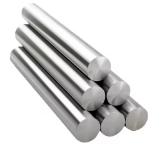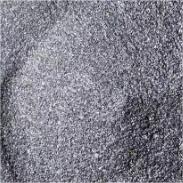**Shine Like Gold: The Surprising Metals That Can Wear Gold Plating**
(What Metals Can Be Gold Plated Gold Electroplating)
You see gold everywhere. Jewelry, watches, fancy electronics, even parts of airplanes. But is that *real* solid gold? Often, it’s not. It’s gold plating. This clever trick gives things the stunning look and valuable benefits of gold without the massive cost. But what exactly *is* gold plating? And crucially, which metals can actually be coated with this precious layer? Let’s uncover the secrets behind this shimmering science.
**1. What Exactly is Gold Plating?**
Gold plating is a process. It sticks a very thin layer of real gold onto the surface of another metal. Think of it like painting, but much stronger and more durable. Instead of brushes, we use electricity and chemistry. The main goal is simple: give an object the desirable properties of gold where it matters most – on the outside. It’s not about making fake gold bars. It’s about adding value, beauty, and function to everyday items. The thickness of this gold layer matters. It can be super thin, measured in millionths of an inch (microns), or thicker for items needing extra durability. The base metal hides underneath, providing strength and structure. The gold layer sits on top, doing its job of looking amazing and protecting.
**2. Why Choose Gold Plating?**
Why bother adding a tiny layer of gold instead of using solid gold? The reasons are powerful and practical. First, cost. Solid gold is incredibly expensive. Gold plating uses only a tiny amount of the precious metal. This makes beautiful gold finishes affordable for many more products. Second, appearance. Gold is simply beautiful. It has a unique, warm luster that doesn’t fade or tarnish easily. Plating gives that instant, luxurious look. Third, protection. Gold is highly resistant to corrosion. It doesn’t rust. It doesn’t react easily with air or moisture. Adding a gold layer shields the base metal underneath from damage. This is vital for electronics and components exposed to the elements. Fourth, conductivity. Gold is an excellent conductor of electricity. Plating electrical connectors with gold ensures reliable signal transmission, preventing corrosion that could cause failures. Finally, solderability. Gold plating provides an excellent surface for soldering electrical components, making manufacturing easier and more reliable.
**3. How Does Gold Plating Actually Work?**
The magic happens through electroplating. This is an electrochemical process. It requires a few key things: a power source (like a battery), a special liquid called an electrolyte solution containing dissolved gold, the object to be plated (the cathode), and a piece of solid gold (the anode). Here’s the basic sequence:
1. **Cleaning:** The base metal object must be spotlessly clean. Any dirt, oil, or oxide layer prevents good adhesion. It gets cleaned thoroughly, often using chemical baths and rinses.
2. **Preparation:** Sometimes, the base metal needs an undercoat. This is called a strike layer. Metals like nickel or copper are often plated first. This improves adhesion and acts as a barrier, preventing the base metal from interacting with the gold.
3. **The Plating Bath:** The clean object is submerged in the electrolyte solution. The gold anode is also submerged. The power source is connected. The object becomes negatively charged (cathode). The gold anode becomes positively charged.
4. **Electricity Does the Work:** When electricity flows, positively charged gold ions in the solution are attracted to the negatively charged object. These ions land on the object’s surface. They stick there, building up atom by atom into a solid gold layer.
5. **Rinsing and Drying:** After the desired gold thickness is achieved, the object is removed. It gets rinsed to remove any plating solution. Then it’s dried carefully.
The thickness and quality of the gold layer depend on factors like the plating time, the electrical current, the solution’s temperature and composition, and the base metal preparation.
**4. Where Does Gold Plating Shine? (Applications)**
Gold plating isn’t just for fancy rings. Its unique properties make it essential in many surprising places:
* **Jewelry & Watches:** This is the most visible use. Gold plating creates affordable jewelry with the look of solid gold. It protects base metals like brass or copper. Watch cases, bands, and even internal components often get gold plated for beauty and corrosion resistance.
* **Electronics:** This is a huge application. Gold’s conductivity and corrosion resistance are critical. You find gold plating on connector pins, edge connectors on circuit boards, semiconductor leads, and switch contacts. It ensures reliable electrical connections in your phone, computer, car, and countless other devices.
* **Aerospace & Defense:** High reliability is non-negotiable here. Gold plating protects critical electrical connectors and components in satellites, aircraft, and military equipment from extreme environments and corrosion.
* **Decorative Hardware:** Think luxury pens, eyeglass frames, trophies, faucets, door handles, and automotive trim. Gold plating adds a high-end, durable finish to these items.
* **Medical & Dental:** Certain surgical instruments, implants, and dental components use gold plating for its biocompatibility, corrosion resistance, and smooth surface.
* **Awards & Trophies:** Oscars, Emmys, sports trophies – gold plating gives these prestigious awards their iconic, valuable appearance without solid gold cost.
**5. Gold Plating FAQs: Your Questions Answered**
Let’s tackle some common questions about this fascinating process:
1. **What metals *can* be gold plated?** The good news is many metals accept gold plating well. Common choices include:
* **Copper & Brass:** Excellent bases, often used in jewelry and decorative items. Great adhesion.
* **Nickel & Nickel Silver:** Widely used, especially in electronics. Provides a good barrier layer. Nickel plating is often applied first.
* **Steel & Stainless Steel:** Can be gold plated, usually requiring a nickel or copper underplate first for adhesion and barrier properties. Common for watch cases and industrial parts.
* **Silver:** Can be plated, but less common as silver is already valuable. Sometimes done for specific color effects.
* **Zinc Die Castings:** Often used for decorative hardware. Requires careful preparation and copper/nickel underplates.
* **Aluminum:** Can be tricky but possible. Needs specialized zincating or other pre-treatment steps before plating.
* **Titanium:** Increasingly used, especially in aerospace and medical. Requires specific activation processes before plating.
* **Plastics (ABS):** Yes, even plastic! It gets coated first with a conductive layer (like electroless nickel or copper) before gold plating. Common for automotive badges and consumer electronics trim.
2. **What metals are *hard* to gold plate?** Some metals pose challenges. Lead, tin, and solders can cause issues due to diffusion or poor adhesion. Highly reactive metals like magnesium require very specialized processes. Cast iron with high carbon content can also be problematic.
3. **Does gold plating wear off?** Yes, eventually. It’s a thin layer. How quickly depends on the thickness, the base metal, the underplate, and how much wear and tear the item gets. Jewelry on rings or bracelets wears faster than a connector inside a sealed device. Plating over nickel generally lasts longer than plating directly onto copper or brass.
4. **Can I gold plate something at home?** Small DIY kits exist for simple items like jewelry. However, achieving professional, durable, and safe results is difficult. The process involves potentially hazardous chemicals and requires precise control. For anything important or valuable, professional plating services are strongly recommended.
(What Metals Can Be Gold Plated Gold Electroplating)
5. **Is gold plating “real” gold?** Yes, the outer layer is absolutely real gold. However, it’s only a thin coating over another metal. It’s not solid gold throughout the item. The purity (karat) of the gold used in the plating solution determines the color (e.g., 24k yellow, 14k rose, white gold).
Inquiry us
if you want to want to know more, please feel free to contact us. (nanotrun@yahoo.com)


